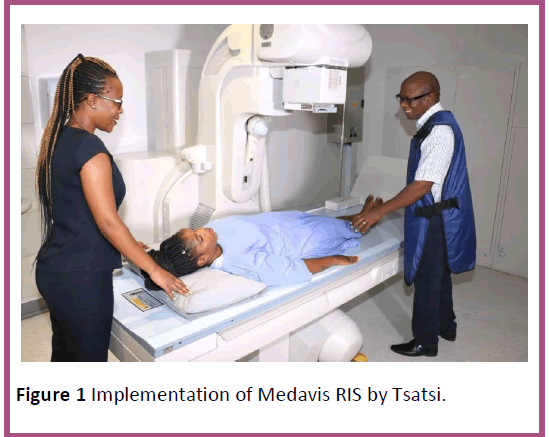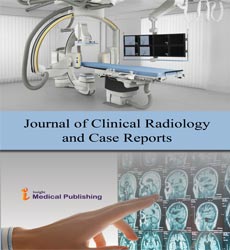HospitalÃÆâÃâââ¬Ãâââ¢s Radiology Effects on patients in South Africa
B'IMPRESS, Augsburg, Germany
- *Corresponding Author:
- Robert E Brunner
Managing Consultant and Editor, B'IMPRESS, Gratzmüllerstr 5, D-86150 Augsburg, Germany, Tel: +49 172 - 8174436; E-mail: info@bimpress.de
Received Date: March 22, 2020 Accepted Date: April 16, 2020 Published Date: April 19, 2020
Citation: Brunner RE, Kapp M (2020) Netcare Pholoso Hospital’s Radiology in Polokwane Counts on Medavis RIS: Overall-Access to Images and Patient Data in a Closed Workflow Process. J Clin Radiol Case Rep Vol.4 No.1:01
Editorial
The ability to deliver a consistently high standard of healthcare services is a constant challenge for 21st-century hospitals. Rapid diagnosis based on instantly available radiology data and images is one of the keys to more efficient and effective treatment cycles. At Netcare Pholoso Hospital in Polokwane, South Africa, the radiology department’s investment in medavis’ Radiology Information System (RIS) is helping it to provide that high standard in a competitive market, with a quality of service rooted in its enthusiasm for innovative, robust and reliable technology.
The rapid evolution of the healthcare market in South Africa is a concentrated version of the global drive for patient-centric service delivery. Nationally, meeting the needs of a socially and economically diverse population dominates healthcare policy. Locally and regionally, the logistical challenges of providing high quality services for private and public services - often across dispersed communities - bring their own pressures.
In this climate, the hospital’s radiology department is rapidly becoming one of the main focal points of integration, making the choice of a robust and reliable Radiology Information System (RIS) a key investment - for clinicians, who see it as an essential data source for quick and efficient diagnosis and treatment, and for patients, who as the owners of their data need to be able to give their own doctors access to the images that will help with diagnosis at the point of care.
At Netcare Pholoso Hospital in Polokwane, the radiology department has based its delivery model on the medavis RIS, making a strong statement about the hospital’s strategy of combining cutting edge medical technology with skilled and experienced specialists to provide exceptional care for patients and their families. The 200-bed hospital opened in September 2015, developed by Netcare in partnership with Pholoso Hospital group. The radiology department operates as a separate facility, with Northern Radiologists providing services on the hospital premises.
The medavis RIS is one of the most innovative solutions worldwide. With modular and scalable applications, medavis already networks radiologists with each other and with
referring physicians across locations and provides relevant information reliably and securely at all times.
The RIS is used by the department’s three radiologists and 20 clinical and administrative staff, and processes the images and data from up to 80 patient appointments per day (Figure 1). It has an interface with the hospital’s PACS, provided by Visus JiveX Enterprise, but there is currently no interface with the HIS. As a green-field site, the department was actually the first in South Africa to implement the Medavis RIS. As Diagnostic Radiologist Prof. Letsebe Darius Ralph Tsatsi explains, the system was chosen on the strength of its reputation.

“More than anything, it was recommended by the guys who provide our PACS as they were familiar with it - and we made the decision in conjunction with the staff,” he says. “It is a functional, reliable system that gives clinicians full access to the reports, allows you to trace all your work and make it available to the PACS.”
The complex IT infrastructure of radiological facilities places the highest demands on the integration of fast and effective workflows with high quality, stability and simultaneous networking. In addition, there are important factors such as economy, sustainability and efficiency.
Prof. Tsatsi says expectations have been more than met by the system’s performance. “It is robust and never crashes, easy to navigate and very well structured,” he continues. “We have really not had any major problems since the installation, and we have certainly never lost any data inputs. It allows us to communicate directly with the doctors, who can log in to the system from their rooms and access reports. Patients can also receive their reports and schedule their appointments. In short, it is very good! We never have to worry about it.”
There were very few practical challenges with the implementation. Some local adjustments had to be made. The main issue to bear in mind for Prof Tsatsi and his team was that the system represented a point of no return.
“Once you have made the move, it is impossible to turn back the clock,” he says. “You are replacing everything that has gone before. You can’t even go back to the old manual systems because they have disappeared! It is just not going to work - so the RIS has to. And because medavis is the first such system we have used, it was important that our decision was justified.”
The role of the local medavis partner, Fris Abaphumeli Trading 1993, based in Roodeport, was crucial in the smooth installation and subsequent support of the system. “We deal with agents who set up our systems and in this case, there have certainly not been any problem,” says Prof Tsatsi. “The relationship has been good and there have been no disruptive incidents. With your partner, it’s a question of their availability and willingness to come out on site - or to diagnose issues
Open Access Journals
- Aquaculture & Veterinary Science
- Chemistry & Chemical Sciences
- Clinical Sciences
- Engineering
- General Science
- Genetics & Molecular Biology
- Health Care & Nursing
- Immunology & Microbiology
- Materials Science
- Mathematics & Physics
- Medical Sciences
- Neurology & Psychiatry
- Oncology & Cancer Science
- Pharmaceutical Sciences
